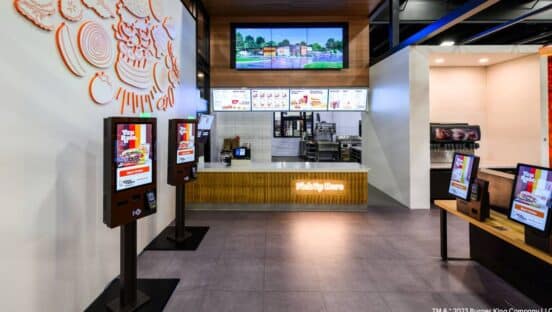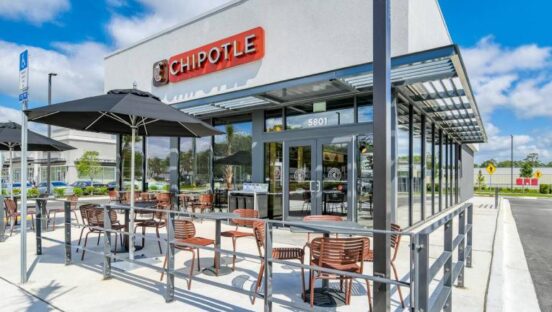Although the concept of consumers using their smartphones to pay for food at limited-service restaurants is nothing new, the mobile payment industry is expected to get a huge boost with last month’s launch of Apple Pay.
The payment service is available with Apple’s new iPhone 6 and iPhone 6 Plus. The mobile wallet allows consumers to pay for goods in thousands of retail locations nationwide, including quick-serve restaurants. Customers pay by simply waving their iPhones near a point-of-sale reader that accepts Apple Pay. Underlying the purchase is a credit or debit card linked to the service.
“People see Apple as a technology and consumer products leader,” says David Matthews, executive vice president and general counsel for the National Restaurant Association. “That they have committed to a mobile payment solution is heartening, because we think it will move mobile payments forward, not only in retail, but in the restaurant space.”
A number of quick-service restaurant brands, including giants McDonald’s and Subway, worked with the technology company to develop Apple Pay. Starbucks and Panera Bread are among those integrating the platform into their existing mobile apps.
Many restaurants that invested in new electronic point-of-sale technology in the past couple of years likely have the capability for Apple Pay, experts say.
“If you are one of those merchants that upgraded, you can be happy that your money was not thrown away,” says Jared Isaacman, chief executive of Harbortouch, which provides payment services and technology to businesses. “For those who have not done it, they have to realize there’s going to be a new payment method that they may have to accept.”
Apple Pay’s technology is not completely new, but rather makes more readily available a platform that has already made inroads in the last five years.
“The first thing to remember about Apple Pay is that it is using the traditional payment infrastructure,” says Thierry Denis, North American president of Ingenico Group, which provides payment solutions. “It’s not a way to get people to do something different.”
What Apple did—as it has with many of its popular products and processes—is to take existing technology, integrate it, and make it consumer friendly and appealing.
“Apple created a pretty elegant mobile payment solution,” says Marc Castrechini, vice president of product management at Merchant Warehouse, which provides businesses with payment solutions and technology. “They really tried to take the existing payment capabilities and put them together in a new and unique way.”
Apple Pay uses near field communications (NFC) with a small antenna in the phones to connect payment information to a point-of-sale device. Existing mobile payment platforms, including Google Wallet and Softcard (formerly Isis), also use NFC. These are tied to the customer’s credit cards, which are accessed with a personal identification number.
However, Apple Pay has a two-part hardware security solution. One is fingerprint identification through a sensor on the phone. At the same time, a chip in the device generates a random 16-digit number for each transaction that mimics the credit card number. That number is never stored in the phone and is meaningless to hackers.
McDonald’s expects its integration with Apple Pay will be seamless.
“We’re looking at it as one of our initiatives to really improve the customer experience,” says Julia Vander Ploeg, McDonald’s recently named vice president of digital in the U.S. “It’s an alliance that will benefit millions of customers.”
Apple Pay will provide convenience and quicker service, both in the drive thru, which makes up about 70 percent of McDonald’s business, she adds, and for Millennials, including the 85 percent of 18–24-year-olds who have smartphones.
“Because consumers are relying on technology more, it’s an area we need to be in,” Vander Ploeg says.
Starbucks is already a leader in mobile payment technology, and Apple Pay will give it another arrow in its quiver. Later this year, the company will add Apple Pay as a way to load or reload the mobile wallet tied to Starbucks’ loyalty program, a spokeswoman says.
During a conference call with analysts in July, company CEO Howard Schultz reported that Starbucks had nearly 12 million U.S. mobile application users, and mobile payments accounted for more than 15 percent of all transactions at U.S. company-operated stores.
“By integrating mobile loyalty, payment, and in-store digital experiences, we are creating game-changing technologies and experiences for our customers,” he said on the call.
Panera plans to tie Apple Pay to its mobile app, but is also installing payment terminals in all of its U.S. bakery-cafés to support NFC payments.
Creating apps to link Apple Pay to other loyalty programs would be a boon for other limited-service restaurants, allowing operators to track customer trends and preferences while giving users freebies and special offers, as Starbucks does, Merchant Warehouse’s Castrechini says.
“If you can get a coupon or loyalty program built in, there will be some compelling value added” to Apple Pay, he says. “The big question is whether Apple will go down that road and create its own, or maybe open it up to the Apple development community.”













